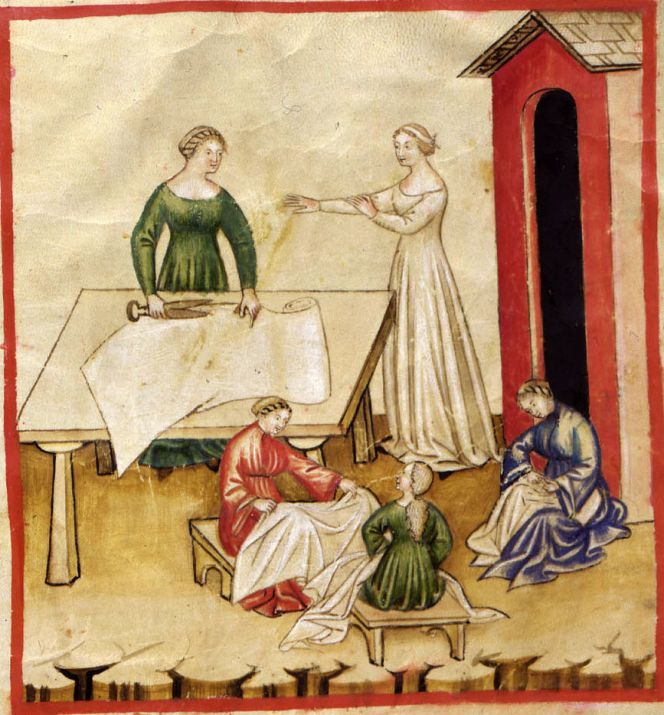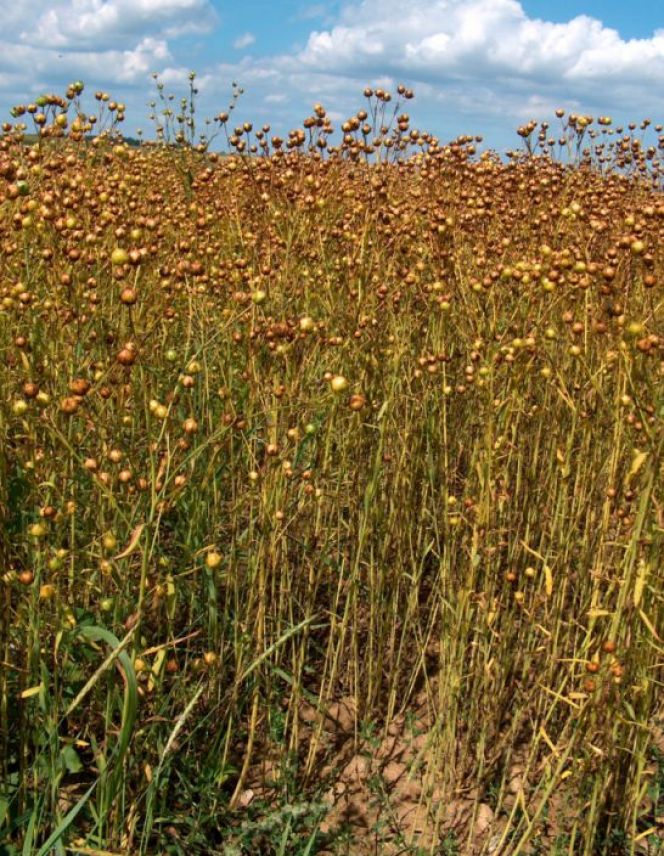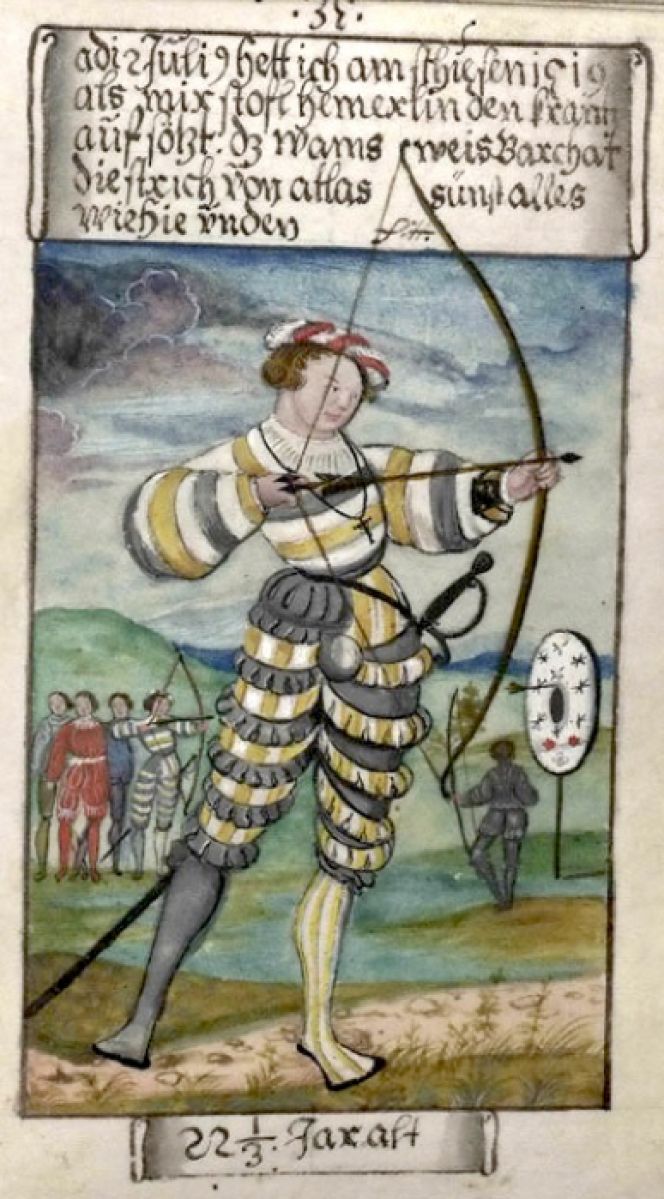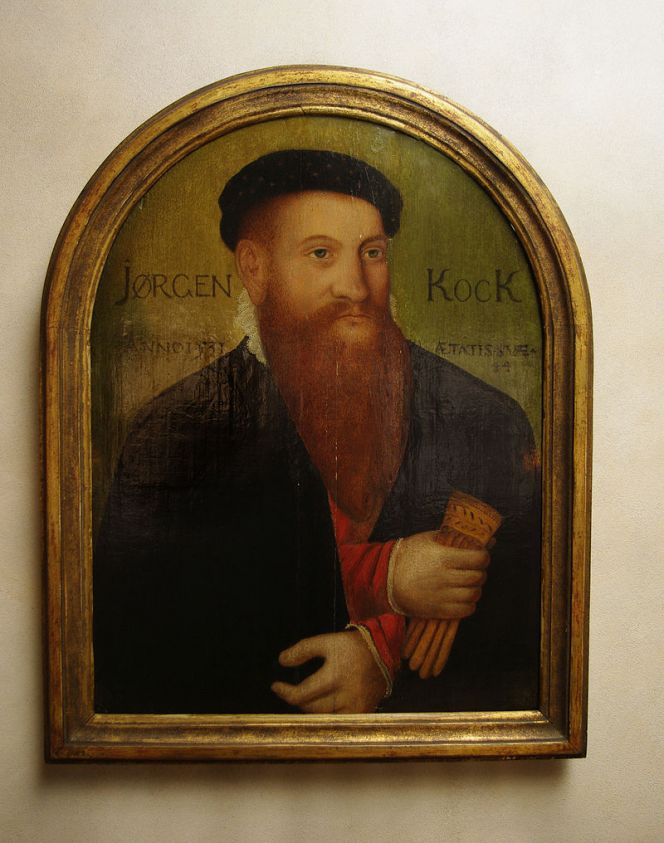ikfoundation.org
Promoting Natural & Cultural History



ESSAYS |
FRAGMENTS OF LINEN AND SILK
– a Medieval Town
In the previous historical essay, the rich selection of finds related to wool and woollen cloth was analysed; linen and silk are not as frequent, but even so, fascinating evidence of the inhabitants’ daily lives is presented. In this context, the trade with linen, the town’s linen weavers, imported silks, an unearthed codpiece and a ribbon of silk will be looked at more closely. Three of the depictions included will be used as comparisons for the clothing worn from the late Medieval period to the early Renaissance – aiming to support and give a clearer understanding of the fragments of linen and silk found during excavations in the oldest parts of Malmö.
 This painting – from the 14th century Italy – gives plenty of parallels to cutting, sewing and wearing of linen cloth in the Nordic area. One of many depictions from the Medieval handbook Tacuinum sanitatis (Courtesy of: Wikimedia Commons).
This painting – from the 14th century Italy – gives plenty of parallels to cutting, sewing and wearing of linen cloth in the Nordic area. One of many depictions from the Medieval handbook Tacuinum sanitatis (Courtesy of: Wikimedia Commons).From the archaeological excavations in Malmö, only six finds are related to flax and linen: two plain woven linen fragments, two specimens of flax fibre, a piece of linen thread and a heckle tool for flax. However, it must be taken into account that flax has a poorer chance of being preserved on earth than wool. Finding more woollen cloth was also expected, as linen was still mainly an imported luxury product during Medieval times. It was first around the year 1400 that linen became an important part of Malmö’s textile commerce and trade, which can be studied in contemporary documents. From Lübeck was, for example, in 1399, among other goods – linen and other textiles – which implies that linen was bought in substantial quantities while the rest of the fabrics were mentioned together as just “textiles”. Additionally, Eric of Pomerania (Danish King 1396–1439), in a charter dating 5th May 1415, described the regulations for how linen had to be sold in the town. Linen was at this time about three times more expensive than the coarse woollen (wadmal) qualities.
By looking closer into the textile historian Ernst Fisher’s research of linen weaving in Malmö, some further information is revealed. He emphasised that it was first during the early years of the 16th century that linen became more commonly used in bed- and table linen by merchants and townsmen. The main reason for this was that flax growing steadily increased from the later part of the preceding century, resulting in a lower price of the raw material as well as in ready-made produce. Another piece of evidence for the change in the local linen trade was that in the late Medieval period; the town had only one registered weaver – ‘Welem Waevare [weaver]’ in 1472 – while the next century had 48 professional weavers working for longer and shorter periods. It can additionally be noticed that Malmö in the Middle Ages and early Reformation was Denmark’s second largest town, after København [Copenhagen] in size. Malmö and the county Skåne, among other places, first became part of Sweden in 1658.
 From my knowledge the sizes of the Medieval flax fields are unknown, but it can be assumed that in or around Malmö flax was only cultivated in small patches of land. The excavated flax heckle (6525:193) is additional evidence for local cultivation, a tool used in the last stage before the spinning to make the fibre as clean and as lustrous as possible. This type of tool is believed to have been known in the Nordic area first in the later part of the Medieval period. Before that various combs and brushes were in use for this purpose. Depiction of growing flax – ready for harvest, Linum usitatissimum. (Courtesy of: Wikimedia Commons).
From my knowledge the sizes of the Medieval flax fields are unknown, but it can be assumed that in or around Malmö flax was only cultivated in small patches of land. The excavated flax heckle (6525:193) is additional evidence for local cultivation, a tool used in the last stage before the spinning to make the fibre as clean and as lustrous as possible. This type of tool is believed to have been known in the Nordic area first in the later part of the Medieval period. Before that various combs and brushes were in use for this purpose. Depiction of growing flax – ready for harvest, Linum usitatissimum. (Courtesy of: Wikimedia Commons).The few finds of Medieval flax and linen can only present a glimpse of linen as used textile material, but detailed facts are scarce, just as in many other places. The same can, for example, be said about the closely situated town of Lund, where two pieces of plain woven linen fragments have been unearthed among hundreds of woollen examples. The same circumstances are reflected in London, where archaeologists have located a limited number of flax pieces or other linen-related finds compared to wool. Another similarity with the London findings is that many discoveries have been made in Medieval earth closets, and urine increases the possibility of preservation of fabric. The same can be said about the two plain woven linen fragments (4560:18 & 5879) from Malmö, which were excavated at the site of the earth closets in the St Gertrud district. These two pieces were found together with several fine broadcloth and silk fragments, once probably used by the relatively wealthy townsmen who lived in this neighbourhood.
 This is one of many portraits from the German accountant Matthaeus Schwarz’s life, the paintings were commissioned by himself during various stages in his life from c. 1520 to 1560 – today known as the “First Book of Fashion”. This particular painting is an interesting comparison of dress and the use of a cod piece when he was 22 years old around 1520, at a time when Malmö also had a substantial German population. The excavated “garment” from Malmö (see details in the text below) was probably worn in a similar fashion in the early 16th century (Courtesy of: Wikimedia Commons).
This is one of many portraits from the German accountant Matthaeus Schwarz’s life, the paintings were commissioned by himself during various stages in his life from c. 1520 to 1560 – today known as the “First Book of Fashion”. This particular painting is an interesting comparison of dress and the use of a cod piece when he was 22 years old around 1520, at a time when Malmö also had a substantial German population. The excavated “garment” from Malmö (see details in the text below) was probably worn in a similar fashion in the early 16th century (Courtesy of: Wikimedia Commons).The codpiece (4560:21) was one of two clothing details found during excavations, together with nine fragments – of various silk qualities. The well-preserved piece was sewn of fine damask silk, so delicate in quality that a magnifying glass is needed to count the number of threads in warp and weft. Additionally, the clothing detail is decorated with silk ribbons and carefully stitched with fine seams. Maybe this exclusive codpiece was accidentally dropped into the earth closet in the early 16th century! It was found during an excavation in 1974. Another textile remaining found in the same spot was a type of silk hair ribbon (4560:20), made of fine plain woven silk with 26 threads/cm in the warp and 32 threads/cm in the weft. It was possibly once used by a girl or unmarried woman as a decorative head accessory.
Three other unearthed finds can have been used similarly, fragments of ribbons and stripes. Ribbons of all kinds were an important part of clothing during both medieval times and later, while this accessory was used to tie various parts of the dress together, decorate/hide seams, or as pure ornamentation. Two of these pieces were found in the earth closets in the St Gertrud district, including one rep-woven silk quality (4560:7:8) with 12 threads/cm in the warp and 16 threads/cm in the weft and one much finer silk with about 50 threads/cm in the weft. Five further silk fragments have been found in excavations, four (4560:11:4a,b,5 &6) in the earth closets and one in the district Humle (5975:1592). A common feature of these pieces is the very fine stripy qualities – 45 threads/cm in the warp and circa 60 threads/cm in the weft – indicating that these fabrics were once expensive imported silks used in clothing by some wealthy inhabitants of Malmö. Additionally, most of the finds from the earth closets in the St Gertrud district – show little of the possible former glory of red, blue or green shades. In contrast, all finds today are of brownish or yellowish brown colour.
 The mayor Jørgen Kock’s portrait from 1531 gives a good understanding of a wealthy man’s clothing in the transition between the Medieval period and Renaissance in Malmö. He is wearing a wide lace collar, a linen shirt can be seen at the wrists, a red upper garment of silk/broadcloth, elegant gloves with possible embroidered details and a fine black cloak… (Courtesy of: Wikimedia Commons).
The mayor Jørgen Kock’s portrait from 1531 gives a good understanding of a wealthy man’s clothing in the transition between the Medieval period and Renaissance in Malmö. He is wearing a wide lace collar, a linen shirt can be seen at the wrists, a red upper garment of silk/broadcloth, elegant gloves with possible embroidered details and a fine black cloak… (Courtesy of: Wikimedia Commons).Notice: The numbering within brackets is Malmö Museum’s catalogue numbers. For a full Bibliography and a complete list of excavated textile fragments, tools, etc, please see the Swedish article by Viveka Hansen, 2001.
Sources:
- Fischer, Ernst, Linvävarämbetet i Malmö och det skånska linneväveriet, Malmö 1959.
- Hansen, Viveka, ‘Förhistoriska och Medeltida Textilier i Malmö’, Elbogen pp. 73-144. 2001. (pp. 112-15)
- Wikipedia (Search words: “First Book of Fashion” & “Tacuinum Sanitatis”).
ESSAYS
The iTEXTILIS is a division of The IK Workshop Society - a global and unique forum for all those interested in Natural & Cultural History from a Textile Perspective.
Open Access essays - under a Creative Commons license and free for everyone to read - by Textile historian Viveka Hansen aiming to combine her current research and printed monographs with previous projects dating back to the late 1980s. Some essays also include unique archive material originally published in other languages, made available for the first time in English, opening up historical studies previously little known outside the north European countries. Together with other branches of her work; considering textile trade, material culture, cloth manufacturing, fashion, natural dyeing and the fascinating world of early travelling naturalists – like the "Linnaean network" – from a Global history perspective.
For regular updates, and to make full use of iTEXTILIS' possibilities, we recommend fellowship by subscribing to our monthly newsletter iMESSENGER.
been copied to your clipboard




– a truly European organisation since 1988
Legal issues | Forget me | and much more...
It is free to use the information/knowledge in The IK Workshop Society so long as you follow a few rules.
 LEARN MORE
LEARN MORE








